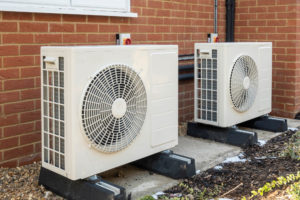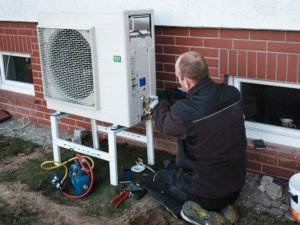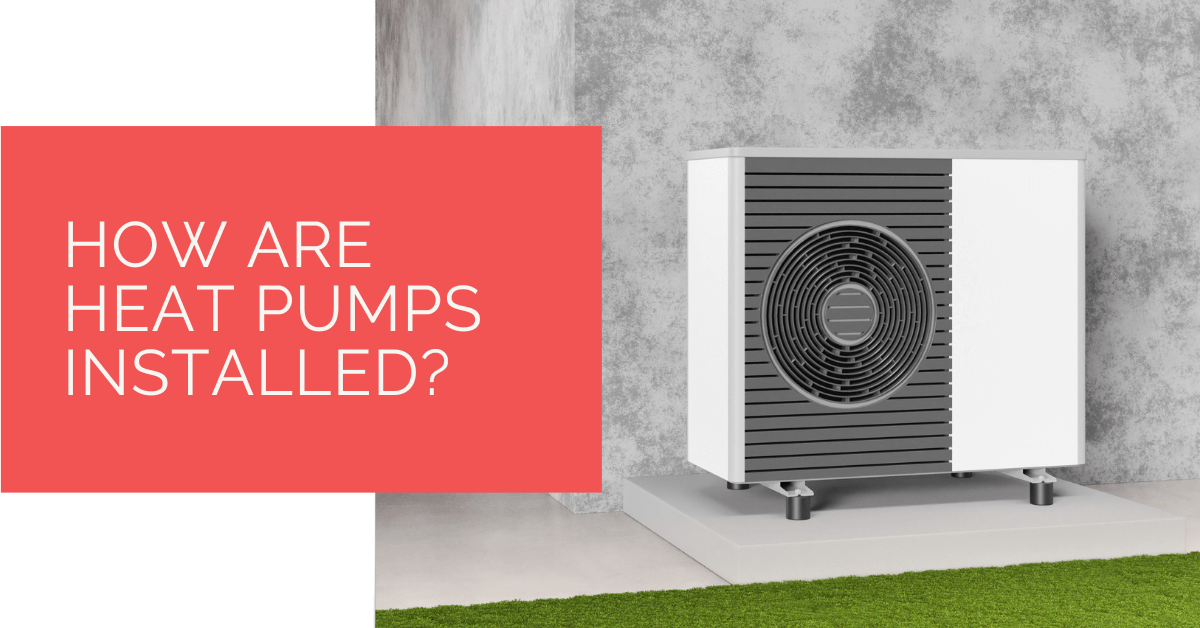Heat pumps have become increasingly popular as a sustainable and efficient way to heat and cool homes. Whether you’re interested in air-source, water-source, ground-source, or absorption heat pumps, understanding how they are installed is crucial to harness their benefits. In this informative article, we will walk you through the installation process, step by step, ensuring that you have the knowledge you need to consider a heat pump system for your home. We will also touch on essential maintenance tips to help you keep your heat pump running smoothly. So, let’s dive in and explore the world of heat pump installation and maintenance to create a more comfortable and eco-friendly living space.
Contents
Key Takeaways
- Heat pumps are an energy-efficient alternative to traditional heating and cooling systems, capable of heating and cooling your space while saving on power costs.
- There are various types of heat pumps, including air-source, water-source, ground-source, and absorption heat pumps, each with unique features and applications.
- Installing a heat pump involves selecting the right location, mounting indoor and outdoor units, connecting refrigerant and electrical lines, and considering additional features for optimal performance. Regular maintenance is essential to ensure longevity and efficiency.
Types of Heat Pumps
All heat pumps operate on the same principle of renewable energy, focusing on heat transfer. However, the primary difference lies in how each of them dissipates heat. Based on the heat dissipation method, heat pumps are classified into:
Air-Source Heat Pumps
Air source pumps work on the principle of vapour compression refrigeration. The mechanism utilises the central heating system to transfer heat. It uses a compressor to absorb heat at one place and a condenser to release it into another place.
Water-Source Heat Pumps
The main appeal of a water source heat pump is its simple design. Hot water helps in the process, and this system is widely used for buildings and uses a cooling tower loop to reject heat in the cooling cycle. The piping of a water pump is done through a building, and each heat pump is connected individually.
Ground-Source Heat Pumps
A ground-source heat pump, also called a geothermal pump, banks on the underground thermal energy to transfer heat. They are an efficient option due to the presence of constant temperature underground. However, they might prove to be expensive if accounted for the excavation required for installation.
Absorption Heat Pumps
These heat pumps utilise thermal energy in their application. However, this energy derives from various sources, including the combustion of natural gases, steam, solar-heated water, or air-heated water.

Installing Heat Pumps in Your Home
With all the specifics and forms of heat pumps cleared out, it is time to understand how you can install one yourself. For starters, invest in a heat pump system verified by the Microgeneration Certification Scheme, MCS, an organisation dealing with low-carbon energy technologies. Once you have decided on your heat pump, follow the installation process consisting of carefully-planned steps without any substitution. The steps are as follows:
1. Pick Out a Location
Usually, heat pumps consist of two components – an indoor heat pumping unit and an outdoor heat pumping unit.
The indoor pumping unit is responsible for heating or cooling and circulating the room air in the space. It comprises a coil, fan, air filter, air vanes, and condensate pipe. There are a few places where you can place the indoor unit for optimal performance. For instance, you can set it high on the wall to allow air to flow downward or horizontally throughout the room.
The outdoor pumping unit facilitates heat transfer and should have an unobstructed air inlet path. Additionally, the outlet air must be directed away from the coil. Since the outdoor unit may invite noise, place it away from areas like the bedroom. Not to mention, it will be most efficient when placed in a warm location.
2. Mount the Indoor Unit
After deciding on the location, you must install the indoor unit first. You can do so by using a mounting bracket on your inner wall to install the unit. Depending on the system chosen (ductless or ducted), you can connect this unit to the attic or basement of your house.
Next, an access point is required to connect the indoor and outdoor units. For this, you can choose to drill a hole near the indoor unit. This hole will act as a medium to connect the refrigerant, electrical, and condensate drain lines for transporting water to the outside.
Connect the refrigerant and electrical lines to the indoor unit. These lines will help transport liquid to the indoor unit, which can be warm or cold. These liquids are then converted to air and released into the room.
3. Install the Outdoor Unit
Outdoor units may not always be visible on the exterior of the house. For example, ground-source heat pumps might have their outdoor units underground to facilitate more effortless heat transfer.
Larger outdoor units usually require a slab or a concrete base to rest. Smaller units can be mounted to the side of your home. No matter the configuration, these units will be installed above ground level, except in the case of geothermal pumps.
Connect the indoor unit to the outdoor unit through the refrigerant and electrical lines. Ensure that these lines are either insulated or passed through conduits. Finish it with a drain line to direct the condensation away from the indoor unit.
4. Add Finishing Touches
Although the main installation is complete, you cannot overlook several additional details. For instance, affix the pipes joining the unit to the side of the house to prevent damage.
You can also add features to your system. There are sensors available that communicate the temperature in different zones to thermostats in the house. You can also use wireless remotes for heat pump controls, allowing you to change temperatures at will.

Maintenance of Heat Pumps
After all that hard work of installing a heat pump, you must be determined to make it last as long as possible. Regular heat pump system maintenance might help it last longer and invite lesser issues. Here are some ways to maintain your heat pumps:
- Check for dust accumulation in your system’s inlets and outlets. Any obstruction might result in the improper working of the system by impacting airflow.
- Clean or change your filters regularly, preferably once a month. Not only can dirty filters damage the compressor of your system, but it also decreases the system’s performance, leading to reduced life.
- Inspect electrical elements to check for issues and clean and replace connections if required. You can also apply a nonconductive coating to ensure safety.
- Lubricate the system to ensure that the mechanism is working as intended.
- Constantly monitor the outdoor unit and keep it clean of debris like snow, leaves, dirt, and grass.
- Switch off the system periodically to prevent overloading and perform routine checkups of all the components.
You can also contact a professional to perform complete maintenance of your system, which can address all the issues above and check for additional problems.
Heat Pump Source: Reliable Heating and Cooling Solutions
At Heat Pump Source, we take pride in our unwavering commitment to serving the UK with top-tier HVAC solutions. From the efficiency of heat pumps and the cool relief of air conditioning to the warmth of boilers, radiators, and underfloor heating, our dedicated team is always at the forefront of innovation. We understand the unique needs of every household and business, and we strive to provide dependable health and cooling products and services that are tailored just for you. Ensuring your comfort and satisfaction is our utmost priority. Whether you have questions, need guidance, or require support, we’re always here to assist. Please don’t hesitate to contact us; we’re eager to be of service.
Final Thoughts
If you feel stuck in any steps mentioned above, it is crucial to call a professional and utilise their services. Installing a heat pump system may not be the easiest of processes, and any damage to the components may invite high costs.
Once installed correctly, you can rest assured that with a bit of maintenance, you can spend your summers and winters in the comfort of your home. Heat pumps also do not take up much of your space since you can mount them on an unused wall.
So, buckle up and install a heat pump today!
About the Author
At Heat Pump Source, our articles are the product of a collaborative effort among a team of highly skilled HVAC experts. Our dedicated professionals, hailing from diverse backgrounds in heating, ventilation, air conditioning, and refrigeration, contribute their extensive knowledge and experience to every piece of content. This multidisciplinary approach ensures comprehensive coverage. Our commitment is to deliver authoritative, reliable, and tailored advice to meet the unique needs of every household and business across the UK.

